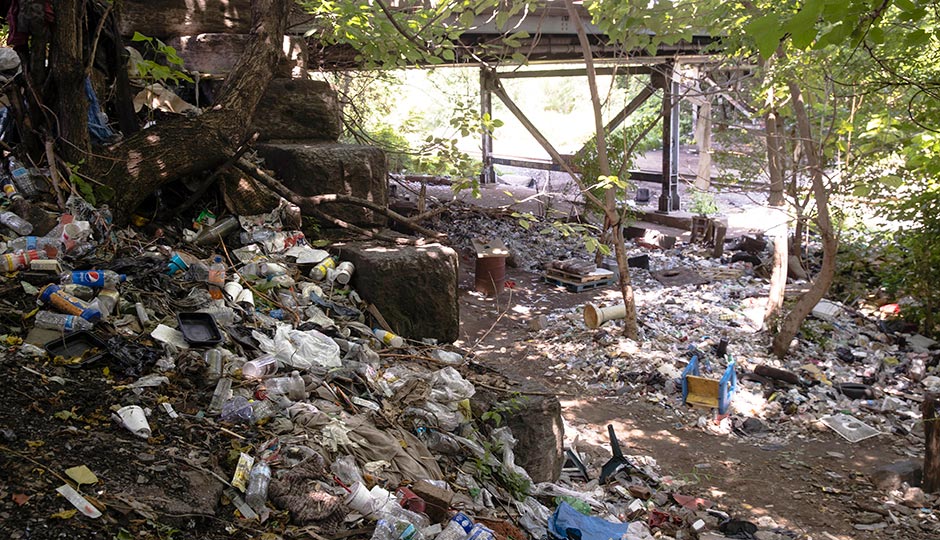RESPONSE: The City Was Well Prepared for the Conrail Heroin Camp Cleanup
Two city officials detail the extensive outreach and ongoing resources dedicated to the opiod users recently cleared from the site.

Photo by Matt Rourke/AP
While Thom Nickels’s August 31st column, “Neighborhoods Are Bearing the Cost of the Conrail Heroin Camp Cleanup,” contains a number of inaccuracies, perhaps the most glaring, outrageous, and blatantly false is his assertion that the city did not have a plan to help those living at the Kensington drug encampment enter into addiction treatment and emergency housing in advance of the cleanup.
Maybe Mr. Nickels didn’t get the memo, but the city’s massive and intense homeless and addiction outreach efforts specifically targeting the hundreds of people who were living along the railroad tracks pre-cleanup are well documented and have been widely reported by many of his journalism colleagues.
The Office of Homeless Services and the Department of Behavioral Health and Intellectual disAbility Services deployed dedicated outreach teams daily to the drug encampment to connect people with housing and treatment services.
We established emergency housing in Kensington in the form of a homeless respite, expanded addiction treatment opportunities, made housing and treatment slots available exclusively for the encampment community, provided transportation for those who were willing to accept treatment, and paid for ID cards for those who didn’t have a valid ID and would not be able to receive Medication Assisted treatment without one.
We also contributed financially to help cover costs associated with an expanded treatment facility at Kensington Hospital in preparation of an anticipated influx of Kensington residents needing services. And we continue to maintain a strong and visible presence in that community with a significant offering of services.
Over the past year, more than 100 chronically homeless individuals from Kensington have been housed. That’s about one third of the citywide total for that period of time. And nearly 700 people from Kensington have been referred to addiction treatment services, which are still being offered in that community on a daily basis as they have been since early 2016.
Additionally, the city is systematically implementing the recommendations of the Mayor’s Opioid Task Force to reduce over-prescription of opioids, save lives through the use of Narcan, and expand treatment beds. These herculean efforts are designed to help us stem the tide of death and devastation ravaging Kensington and communities across the city.
While the Conrail site may have been the most dramatic and compelling visual demonstration of the opioid epidemic for Philadelphia, this crisis is much larger than the railroad encampment. It is truly a Hurricane Harvey–sized crisis that’s impacting families and communities of all stripes. And unfortunately, it has yet to max out. The epidemic claimed more than 900 lives in Philadelphia last year, and across the state 13 people died of drug overdose each day in 2016. Sadly, these numbers are expected to increase for 2017, as an estimated 70,000 Philadelphians are currently abusing opioids.
We cannot force people into treatment or housing. We can only continue to let people know in the most comforting and encouraging way possible that hope and help are available and continue to provide services to those who are agreeable. We must also be mindful of the social determinants of treatment outcomes. Many of those exiting the encampment expressed a need and desire to access permanent housing and employment opportunities following treatment. And for that, we need everyone’s help.
Liz Hersh is director of the Office of Homeless Services. David T. Jones is commissioner of the Department of Behavioral Health and Intellectual disAbility Services.


